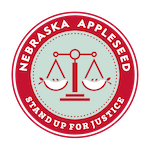We all know that a lower income means more struggles for families. Families with greater economic resources are not only able to better provide important inputs into their children’s development such as nutritious meals, safe neighborhoods, and higher-quality educations, but higher incomes have also been shown to improve parent’s psychological well-being and parental interactions with children.
However, public perceptions remain cloudy about the impact of public benefits programs on the quality of life for kids and families – do they make a difference? Or do the negative impacts of poverty simply outweigh the impact of assistance programs?
The chart below demonstrates just how much of a difference public assistance can make. A single parent with two young children incurs an average of $34,617 of expenses per year, just to meet their basic needs. If this parent works full time for minimum wage ($7.25), they make $15,080 per year; less than half of the expenses they incur. This is a difference of $19,537. When public assistance in the form of federal and state tax credits, food stamps, public health insurance, and child care subsidies are added, the gap is decreased to $4,990.
And, simply put, the alternatives for children are unequivocally negative. Compared with children whose families had incomes of at least twice the poverty line during their early childhood, poor children completed two fewer years of schooling, earned less than half as much money, had significantly worse health outcomes, and faced other life-long challenges.
Public benefits programs help even the playing field of childhood experience for thousands of Nebraska families.
Public programs which assist in covering the most basic of needs are enough to make a significant difference for families with children during their most critical years; not only in meeting basic needs, but in providing family economic stability, decreasing stress, and contributing to more positive child outcomes in the long term. So, do public assistance programs matter for kids and families? In one word, yes.
Bridging the Gap Between Earnings and Self-Sufficiency: The Advantage of Public Benefits Programs

